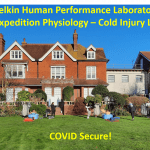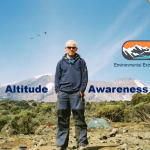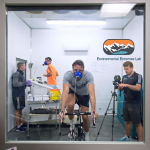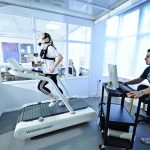Josie Adams, 26, an ultra-endurance athlete sponsored by the charity Paramonte, approached Dr Neil Maxwell and the EEL team at the University of Brighton to aid her with preparations for the Coastal Challenge in February 2018 – a 236 km race through part jungle, over trails and up into alpine terrain. Of course, the EEL team did not hesitate in declaring their support for Josie. Rebecca Relf took the lead, organising the week leading up to Josie’s departure for Costa Rica, where temperatures during the challenge were expected to be around 30°C whilst also very humid (~60-80% relative humidity). Rebecca and three other PhD students (Jason Newbery, Greg Eichhorn and Rosie Lewis) supported Josie in completing 9 heat acclimation sessions in 6 days. Although, taking a backseat on this occasion, support in the form of spreadsheet design and heads popping into the labs by Ash Willmott and Neil was greatly appreciated.
Heat acclimation sessions coincided with Josie’s training taper, therefore sessions were not dictated by any usual heat acclimation protocol. With any form of heat acclimation design, the desired core temperature to achieve and maintain for optimal adaptation is recognised as 38.5°C. We therefore, aimed for Josie to reach this core temperature within the first 20-30 minutes of being in the chamber, and to maintain it for around an hour during each session. On a few of the days, Josie had two heat exposures in a day (benefitting from the our research, led by Ash, around twice-a-day heat acclimation, which left her feeling a bit “heady” and “tired”. However, she knew her body well and dictated the sessions according to how hard she wanted to push herself running, walking or simply sitting in the chamber to gain any form of advantage in her upcoming competition in the heat.
A lactate threshold test was conducted on Josie’s first and ninth visit in order to compare a few main variables; heart rate, core temperature, sweat rate etc. to determine if any adaptation had occurred. Table 1 below briefly outlines the positive changes we discovered before Josie set off to compete.
Table 1. Changes in Josie’s physiological variables during a standardised threshold test after heat acclimation.
Finally, we asked Josie her thoughts, after the sessions in the labs were complete before she departed for Costa Rica;
“For me the psychological effects possibly outweigh the physical effects – with the past years’ experience I know that I can push through/cope with heat issues if I need to – the thought of heat doesn’t phase me too much. However, being mentally calm, prepared and race-ready with my mind in the best possible place, is of real importance to me (and ultra-running as a sport I think).
I think this great ‘head space’ is the result of a combination of the following:
– sole focus on race/training
– some ‘me time’!! (Detached from incredibly busy lifestyle)
– handing over the reigns to the EEL team for a week makes a nice change from being the only one in control of my training all the time. Very relaxing!
– to top all the above, the confidence of knowing I have acclimated well and am physically ready to deal with the heat is the cherry on the icing.”
To our delight, Josie completed the Coastal Challenge (total of 88 started (33 females) with 52 finishing (24 females), finishing an impressive 5th in the females and 19th overall! As a team, EEL are delighted to have helped Josie out in the lead up to such a great achievement – congratulations!
 Above are the official race results, which just highlights Josie’s placement in such a prestigious event!
Above are the official race results, which just highlights Josie’s placement in such a prestigious event!
If you are interested in receiving support for extreme challenges, please use the link for contact details.



































Leave a Reply